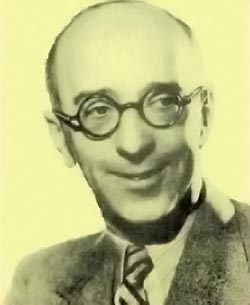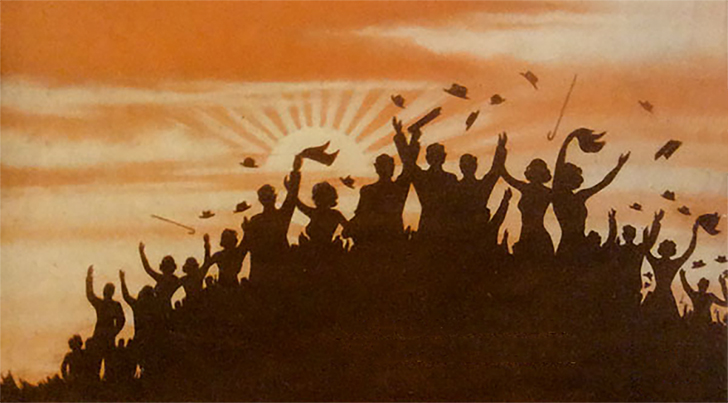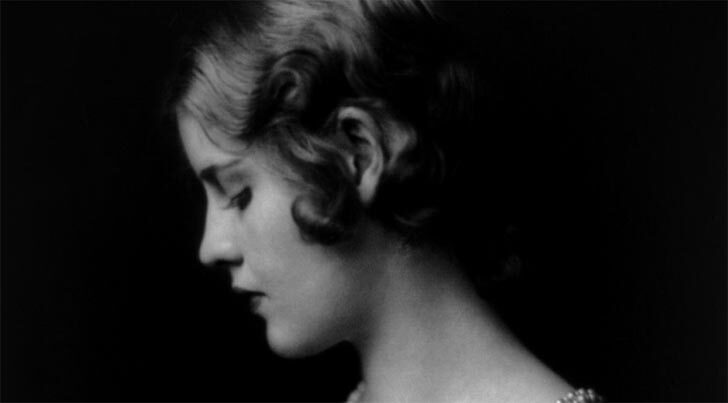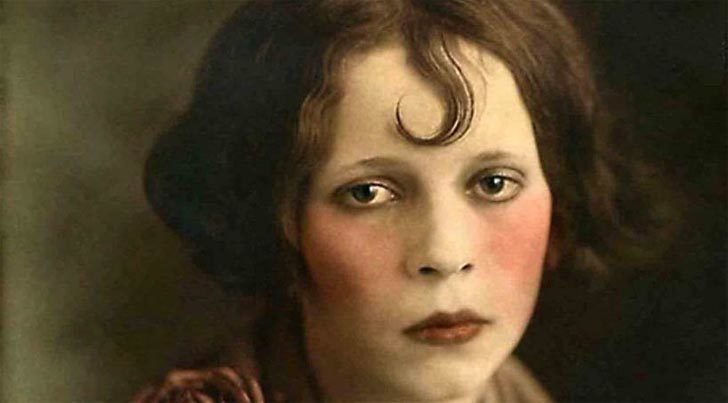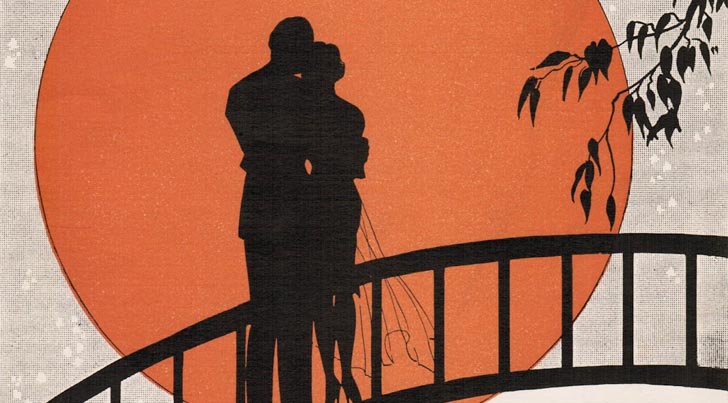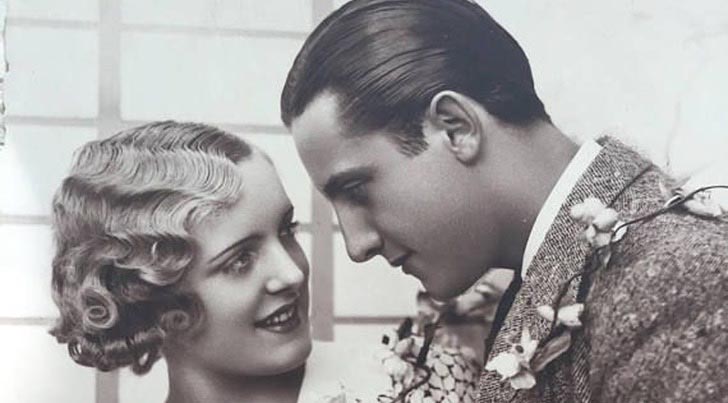“When That Man Is Dead and Gone.” Words and music by Irving Berlin (1941). Recorded in London on April 9, 1941 by Elsie Carlisle with orchestral accompaniment directed by Jay Wilbur. Rex 9960 mx. R-5566-1.
Personnel: Jay Wilbur dir. ?Alfie Noakes-?Chick Smith-t / tb / 3 cl-as-bar / Charles Trimby + 1-vn / p / g / sb / d / Elsie Carlisle-v
Elsie Carlisle – “When That Man Is Dead and Gone” (1941)
“When That Man Is Dead and Gone” is a song as edgy as it is catchy, insofar as it expresses a wish that a specific human being will cease to be. We are generally discouraged from making bold predictions that a bright future will definitely result from anyone’s demise, so Irving Berlin’s lyrics seem ethically transgressive and therefore artistically daring. The song’s message is made infinitely more powerful by the fact that its audience is expected to easily identify who “that man” is and thereby to realize that they have had the same dark fantasy themselves. “That man” is never named, although the reference to a “small moustache” makes it clear that he is Adolf Hitler.
“When That Man Is Dead and Gone” was published and released early in 1941, well before the United States entered World War II, but presumably the strong anti-Hitler sentiments of Elsie Carlisle and her countrymen (already engaged in war against the Axis Powers) were shared by most of the Americans who heard the song when it was first recorded and broadcast. Irving Berlin’s only memory of his native Russia consisted of seeing his family home burn down during a pogrom, so his aversion to violent expressions of intolerance may have been intensely personal.
Elsie Carlisle’s version of the song—augmented with a fine arrangement and the adept accompaniment of Jay Wilbur’s band—is a particularly fine example of how the underlying concept can sound rather sinister and conspiratorial. It is as if she is vacillating between slow, methodical plotting and swingy jubilation. Interestingly, some parts of the session were broadcast on the radio in a documentary about the record industry1, but the program has been lost, as far as I know.
Noteworthy American recordings of “When That Man Is Dead and Gone” include those of Glenn Miller and His Orchestra (v. Tex Beneke and The Modernaires), Mildred Bailey (with The Delta Rhythm Boys), and Buddy Clark.
British recordings of the song include versions by Ambrose and His Orchestra (v. Anne Shelton), Geraldo and His Orchestra (v. George Evans and chorus), Carroll Gibbons and the Savoy Hotel Orpheans (v. Anne Lenner), Jay Wilbur and His Band (v. Sam Browne), Joe Loss and His Band (v. Bette Roberts), and Al Bowlly and Jimmy Mesene. Of the latter recording, it is worth noting that it was Al Bowlly’s last; he was killed two weeks later by one of That Man’s parachute mines.
Notes:
- “Wax Secrets on Air,” Melody Maker, April 26, 1941, 1, ProQuest. ↩

